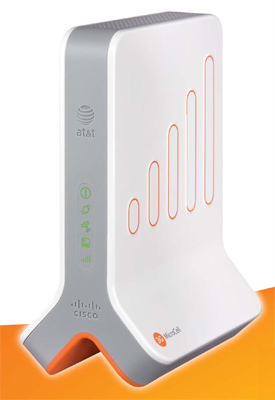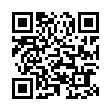Triple-Click to Select Entire Lines
Everyone knows about double-clicking to select words, but did you know that you can, in most applications, triple-click to select an entire line or paragraph?
Written by
Adam C. Engst
Recent TidBITS Talk Discussions
- Alternatives to MobileMe for syncing calendars between iPad/Mac (1 message)
- Free anti-virus for the Mac (20 messages)
- iTunes 10 syncing iPod Touch 4.1 (2 messages)
- Thoughts about Ping (16 messages)
Published in TidBITS 1020.
Subscribe to our weekly email edition.
- Mac OS X 10.6.3 Update Delivers Range of Fixes
- Apple Enables App Store Gifting
- Adobe CS5 Gets Announce Date, Lightroom 3 Beta 2 Available
- SmileOnMyMac Joins Long-Term TidBITS Sponsors
- New Take Control Ebook Explains DEVONthink 2
- Apple May Be Making Verizon-Compatible iPhone
- 3G iPad Will Allow Data Upgrades for 250 MB Plan
- Pre-ordering the iPad: It's All about the Brand
- TidBITS Watchlist: Notable Software Updates for 29 March 2010
- ExtraBITS for 29 March 2010
AT&T 3G MicroCell Promises a Cell Tower for Your Home
After more than a year of leaked details and trials, AT&T announced it would ship its 3G MicroCell for $149.99 in mid-April 2010. The 3G MicroCell is a femtocell, a short-range cellular base station designed to augment coverage in a home or small office, with traffic - both voice and data - handled over subscriber-provided broadband. AT&T has an information site with a perky actress explaining the service.
A femtocell offloads traffic from a carrier's constrained cellular infrastructure, avoiding use of local spectrum for handling the signal and backhaul for routing calls and data to the rest of the network. Sprint Nextel, T-Mobile, and Verizon Wireless have similar offerings. (T-Mobile technically uses UMA, unlicensed mobile access, which relies on Wi-Fi in a home instead of extending a cell network into the house.)
By default, calls placed via the 3G MicroCell count against your normal voice minutes, even though you're not using AT&T's cellular network for the connection. AT&T will also offer a $19.99 per month unlimited domestic calling plan for calls made or received on the 3G MicroCell; minutes aren't deducted from your voice contract. The price is the same for individual or family plans. A $100 mail-in rebate on the femtocell is available if you sign up for this plan; AT&T will kick in another $50 through a mail-in rebate to new DSL (1.5 Mbps or faster) or fiber customers, too.
For its standard cellular voice service, AT&T charges a base rate of $39.99 per month for 450 minutes for individual plans and $59.99 per month for two lines and 550 pooled minutes in a family plan (and $9.99 per month for one more line). The $19.99 add-on rate for unlimited calling would thus still be cheaper than AT&T's anytime unlimited service, which costs $69.99 for individuals and $119.99 for two lines in a family plan ($49.99 for additional lines).
However, because even AT&T's most basic voice plans include unmetered calling from 9 PM Friday to 6 AM Monday, and from 9 PM to 6 AM during weekdays, only those who use high numbers of minutes during weekdays and early evenings at home will benefit the most from the unlimited 3G MicroCell calling plan.
The 3G MicroCell handles both 3G voice and data service, and will work with up to 10 registered numbers. AT&T says that four calls can be in progress at the same time. The number registration also means you don't have to worry about neighbors hopping onto your service, even though that would directly benefit AT&T.
3G data is routed via the 3G MicroCell, too, even though AT&T offers no special deal for unlimited data carried on your own broadband network. Most sensible people would be using Wi-Fi for that purpose, although some regular phones and smartphones with 3G still lack Wi-Fi.
The 3G MicroCell, like femtocells provided by Sprint and Verizon, includes a GPS receiver and a long antenna cable. Because each carrier has exclusive licenses to specific frequency ranges dependent on geography, a clean GPS signal must be extracted to ensure use of only the right chunks of spectrum. GPS is also used to provide E911-compliant call information for emergency services. Additionally, the GPS receiver prevents you from using GPS in an area in which AT&T has no frequency licenses and outside the United States.
In cities like San Francisco and New York, where complaints about iPhone service have been particularly severe, AT&T could get a new lease on life if it can convince its customers to pony up for the 3G MicroCell.
Several analysts last year suggested that cellular carriers simply give away femtocells to customers in poor service areas as a marketing and loyalty tool that would also save on infrastructure update costs. In dense neighborhoods with lots of femtocells, congestion on existing cell sites could be significantly reduced as traffic was diverted to home broadband.
 Dragon speech recognition software for Macintosh, iPhone, and iPad!
Dragon speech recognition software for Macintosh, iPhone, and iPad!Get the all-new Dragon Dictate for Mac from Nuance Communications
and experience Simply Smarter Speech Recognition.
Learn more about Dragon Dictate: <http://nuance.com/dragon/mac>
I'm going to wait until the next model of the iPhone is released, though (assuming that there will be one in the next three or four months) just to see whether there will be any other carriers added to the mix.
Per other articles written at this site and elsewhere by yours truly, it is extremely probable there will be no Verizon nor Sprint CDMA-based iPhone (although expect an LTE one in 2012). T-Mobile is a candidate, but we haven't heard word one leaked about that.
T-Mobile's 3G network frequencies and approach vary from AT&T's, which makes the current iPhone models work only at 2G speeds on T-Mobile's network.
I don't know that you need GPS to function continuously. If you used a charged, unplugged UPS, you could get the GPS signal at ground level by having the MicroCell plugged into it on battery power, then move the UPS indoors and plug it in.
My understanding is the GPS lock is at startup.
Needless to say, this struck me as weird, and I'm checking into it more.
There is no planned limit in any of AT&T's leaked information or their now-public details about where you can use these in the U.S.
The way to use a "cell" phone when roaming is to get a T-Mobile dual mode UMA phone, which can make "cell" calls over Wi-Fi when you're outside of T-Mobile territory anywhere in the world, so long as you make sure and disable the cell radio. (Otherwise, it will make superexpensive GSM calls.)
The first problem is that any AT&T 2G phone in range of the MicroCell takes both the 2G phone and MicroCell offline. I learned this after several weeks of calls with AT&T tech support. This is just a ridiculous restriction, as I am unlikely to ask everyone who enters my home to turn off any 2G phone.
Second, even when no 2G phones are taking the MicroCell offline I still experience dropped calls. I invested $150 so that I could forward my work phone to my iPhone and have a second line while working from home. Given the frequency of dropped calls I still ask callers if I can call them back from a landline if the call will take more than 30 seconds.
Very disappointing.
But if you live in an urbanized locale and you can't get decent 3G service, why doesn't AT&T offer this to you at a nominal rate (like $10 shipping if you still have a year or more left on a contract)?
It feels quite penny wise, pound foolish.


